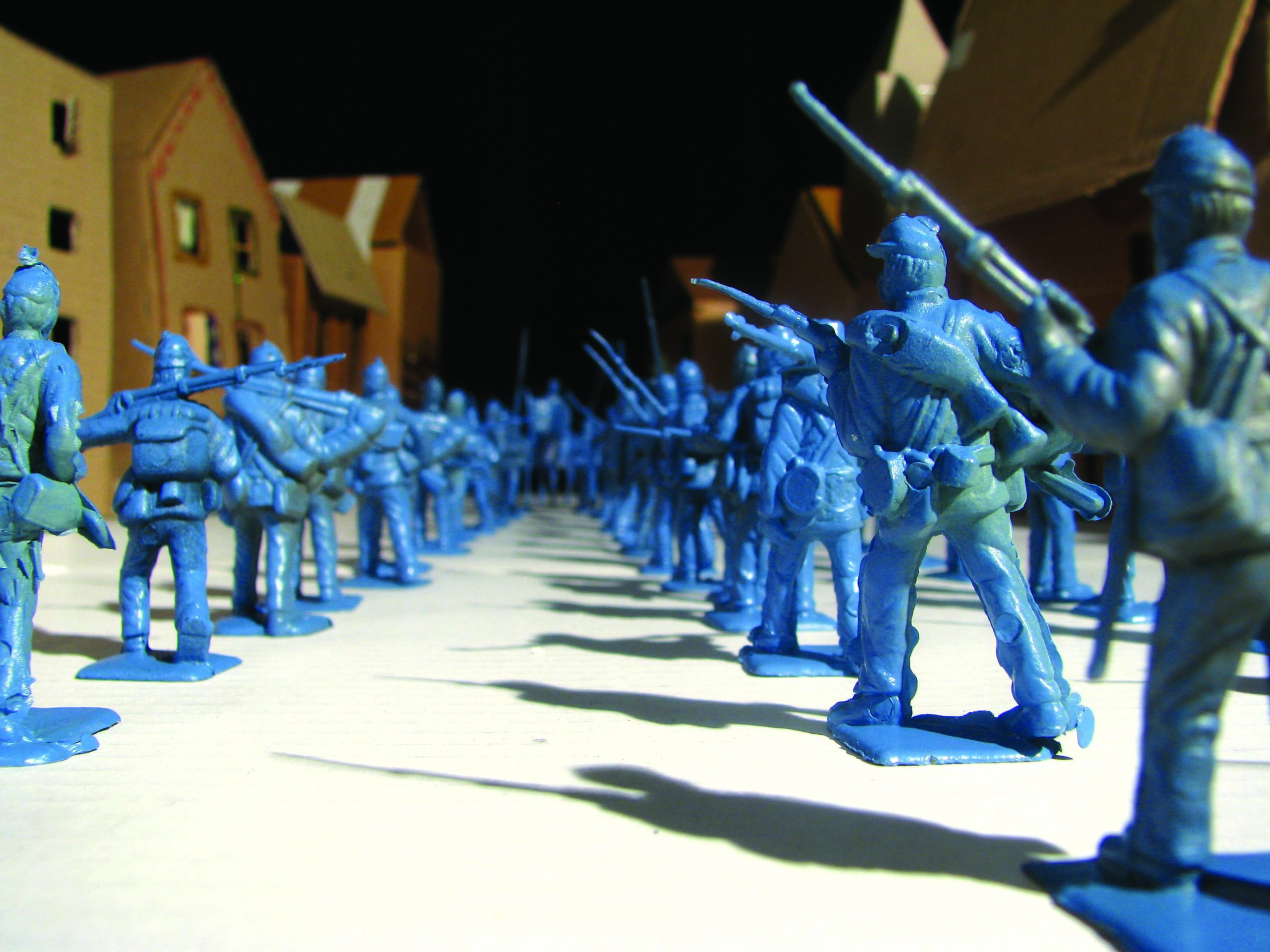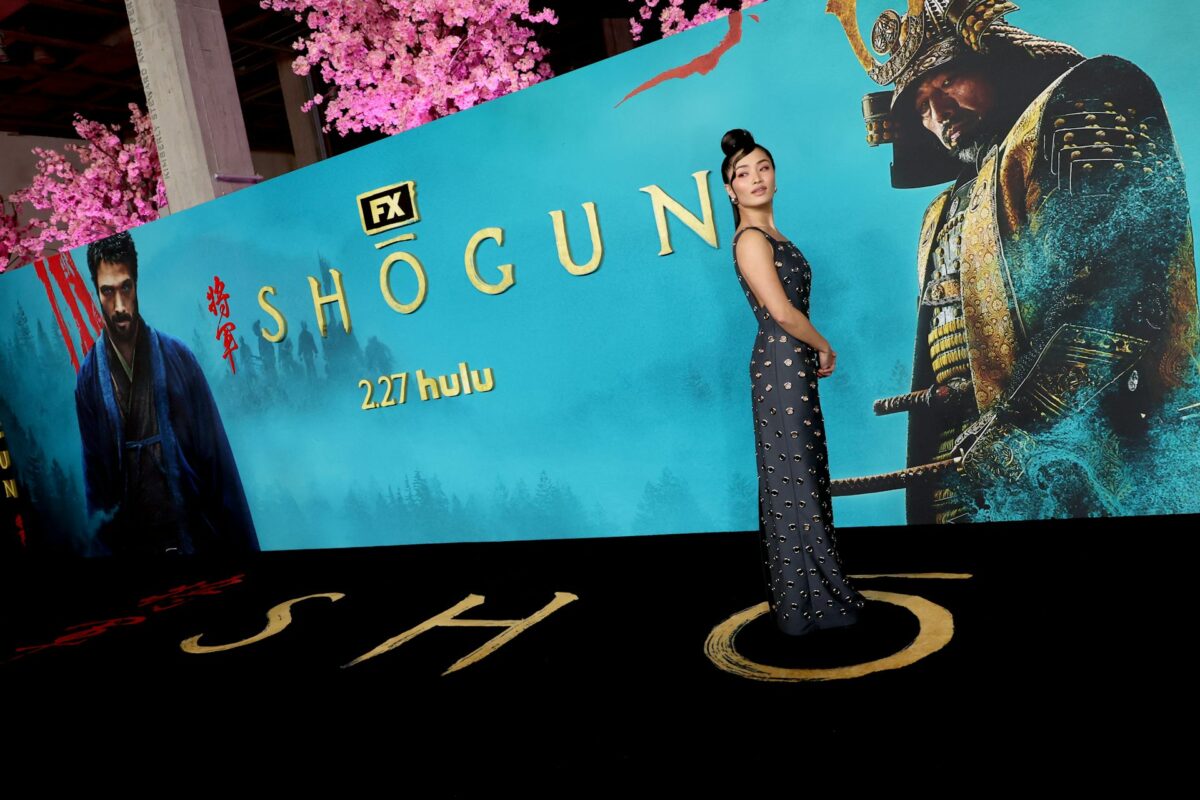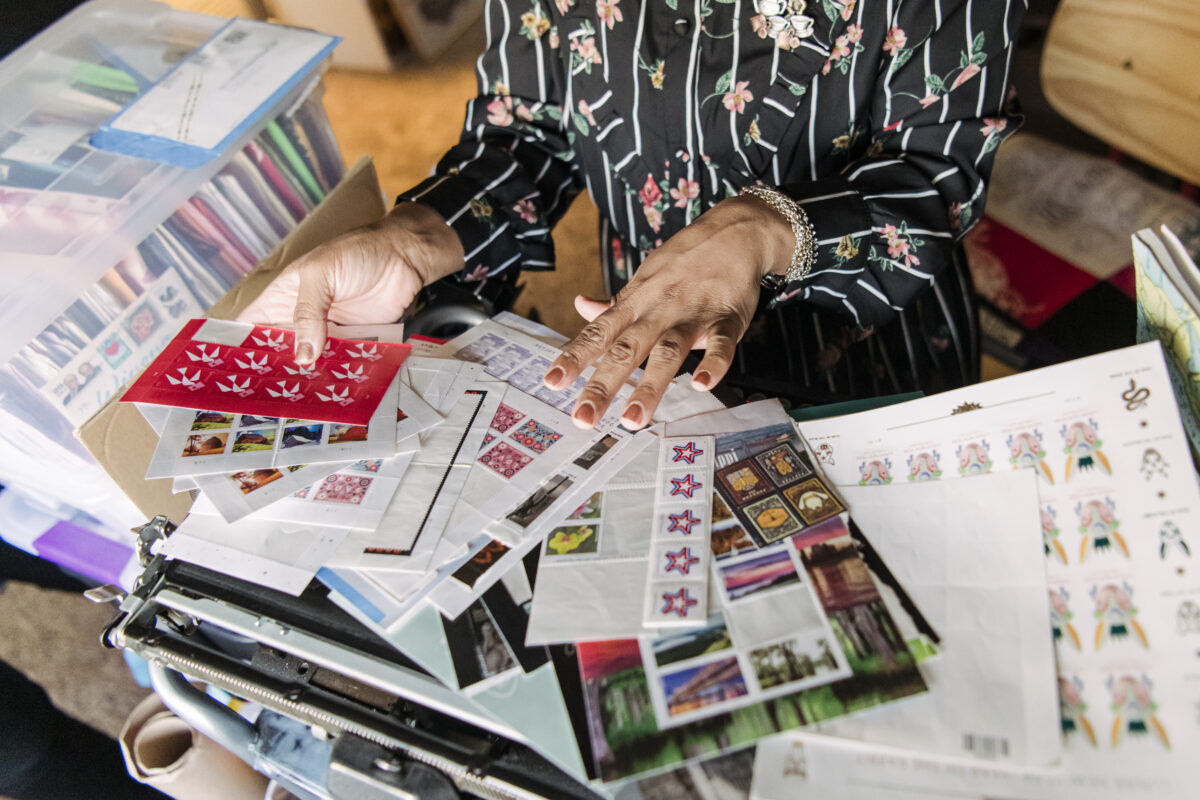UMBC associate professor of history Anne Sarah Rubin is at the forefront of using digital approaches to research history and other areas in the humanities.
– By Scott McLemee
The very thought of a website devoted to Sherman’s March may inspire mild dread. After all, the path of destruction that General William Tecumseh Sherman and the Union Army blazed across Georgia during the final weeks of 1864 was one of the most violent episodes in American history.
But by some unwritten law of the Internet, historical trauma nearly always returns as digital kitsch. One braces for a cross between a Wikipedia entry and a bunch of Gone with the Wind mash-ups on YouTube, a screen that fills with animated flames and speakers emitting the sound of a melancholy harmonica.
But it doesn’t have to be that way. And a collaboration between two UMBC faculty members is exploring the potential of a movement known as the “digital humanities” – wherein digital tools are used to explore history and other subjects in all their depth and complexity.
Since 2008, Anne Sarah Rubin, an associate professor of history, and Kelley Bell ’05, M.F.A. imaging and digital arts, an assistant professor of graphic design, have been putting together Sherman’s March and America: Mapping Memory [www.shermansmarch.org]. The multimedia site launched in July 2010, funded with a grant from the American Council of Learned Societies and support of UMBC’s Imaging Research Center.
Rubin says that the version now online is a work in progress representing about twenty percent of what the creators have in mind. They hope this “proof of concept” (as the bureaucratic lingo calls it) will help them to secure the support of the National Endowment for the Humanities when they apply for funding this fall.
The site design is simple and elegant. But closer examination also reveals a sophisticated engagement with issues in historiography (that is, the questions historians ask themselves about the methodology of reconstructing the past).
Visitors to the site are greeted by a map showing the area covered by Sherman’s men as they made their way between Atlanta and Savannah in November and December of 1864. The troops followed two different courses between those points, scorching the earth as they went. At the bottom of the screen is a timeline. Slide the cursor on it and you can trace the progress of each wing of the Union Army. Click on one of the highlighted towns along the way, and there pops up a short video based on events in that area during the campaign.
But the three-minute clips don’t just recite information on the military campaign, as viewed with the benefit of nearly 150 years of hindsight. The stories they tell reflect the variety of groups affected by the march. Yankee soldiers, Confederate citizens, and newly freed slaves, for example, each experienced things from distinct perspectives. And those final weeks of 1864 threw a long shadow, inspiring later generations to create books, films, and tourist attractions. How events were woven into the public memory becomes part of the story. The site looks at General Sherman, of course – but also at Margaret Mitchell, who wrote Gone With the Wind.
“I like big questions, big issues, ‘going wide’ in looking at history,” says Rubin. “What appealed to me about Sherman’s March as a subject was the possibility of using the map as a way to frame the ‘multipositionality’ of events – how they looked from a variety of perspectives. As a digital history project, this isn’t just a collection of facts about the past. It’s also about narrative, storytelling, and memory.”
Rick Shenkman, founder and editor of the digital History News Network notes that the site’s design “reflects the sensibility of historians who have, in effect, reinvented history in the modern era.” Where historians once tried to create “a grand narrative into which Americans could stuff all of their disparate stories, pulling and tugging on the edges so that none of the pages stuck out in an unseemly manner,” the contemporary approach is to confront the variety of vantage points head-on.
“Rather than shy away from conflicting interpretations of the past, as many museums do,” Shenkman says, “the modern approach is to embrace them.” And this Sherman’s March and America does – using digital tools to map both the events and the nature of historical memory itself.
Collaboration and “Creative Foraging”
“This is definitely one of those post-tenure projects,” Anne Rubin says. Maybe so – but putting together the project was no lark. Rubin, who received her Ph.D. in American history from the University of Virginia in 1999, belongs to the first generation of scholars in the humanities to feel perfectly at home using new media.
She has done her share of work in the more traditional forms of academic publication – conference papers, journal articles, and encyclopedia entries, for example. She turned her dissertation into a book, A Shattered Nation: The Rise and Fall of the Confederacy, 1861-1868, published by the University of North Carolina Press in 2005. That same year, she received tenure from UMBC. The book went on to win an award from the Organization of American Historians.
But Rubin was already exploring the potential of digital history well before she got her Ph.D. As a graduate student at the University of Virginia, she began working in 1993 as the project manager for Valley of the Shadow – a pioneering effort to put history online, started at a time when the World Wide Web itself was brand new.
Initiated and overseen by the historian Edward L. Ayers (now president of the University of Richmond), Valley of the Shadow involved creating a digital archive of all available Civil War-era documents from Augusta County, Virginia, and Franklin County, Pennsylvania. This enormous project won two awards from the American Historical Association. Valley helped consolidate digital history as an important part of the profession. But it also left Rubin wondering about the further potential of the new tools.
“I liked the idea of continuing to look at both the Union and the Confederacy as we’d done with Valley,” she says. “I didn’t want to build an archive, though, because I’d already done that.”
The challenge was to go beyond using the Internet as a delivery system for information that might be presented just as well in a book or a film. Were there arguments or issues that digital tools might be uniquely suited to explore?
As it happened, the seed of an idea was already planted – by way of Ross McElwee’s quirky documentary Sherman’s March: A Meditation on the Possibility of Romantic Love in the South During an Era of Nuclear Weapons Proliferation (1986). Setting out to make a film about how the March was remembered and commemorated in the contemporary South, McElwee found history and his own life becoming knotted up in poignant and amusing ways.
“It made me think about the way that Sherman’s March could serve as a powerful metaphor,” Rubin recalls, “and made me start probing the way that Americans thought about the March and used it as a symbol.”
As with any scholarly project, this one involved long stretches of solitary reading and thinking – but it also required collaboration, and plenty of it. In 2007, Rubin took her idea to Dan Bailey, the director of UMBC’s Imaging Research Center, who helped put together a grant proposal submitted to the American Council of Learned Societies. This yielded the funding necessary for Rubin to devote 2008 to the project, as well as $25,000 for technical support. The IRC later contributed $12,000 to help flesh out the work-in-progress.
“Once she got the grant,” Bailey says, “I matched Anne with Kelley Bell, and IRC supported their collaboration by assigning undergraduate interns to work on the project. Anne was open to ideas that IRC had about how to connect to a broad audience – that’s part of our mission, supporting interdisciplinary work on campus, but also getting it out to the public.”
“We were a fortuitous pairing,” says Kelley Bell, whose artistic skills translated Rubin’s historical ideas into striking imagery. As a freelance designer, Bell had been involved in film and television productions in Baltimore earlier in the decade – including a stint working on The Wire, which future generations will study to understand what America was like at the turn of the millennium. (Bell created diplomas that hang on the walls of various characters in the HBO series.)
It was while getting her own graduate degree from UMBC that Bell began studying digital animation. The Sherman’s March project allowed her not just to put that skill to work but to explore and experiment.
“This hasn’t been the usual experience between designer and client,” she says. “It’s more collaborative, a dialogue. We do a lot of ‘creative foraging,’ with a great deal of historical research on my end to find images, maps, and typefaces that fit the material.”
At the heart of everything is the historian’s in-depth understanding of the material – which must be converted into a series of resonant but extremely succinct video segments.
“The narration for three minutes of video,” says Rubin, “works out to 500 to 550 words of text. We use visual imagery to carry much of the narrative. But as a writer, I’m used to being able to explore tangents, while this is a discipline of constantly revising, constantly tightening my focus.”
Avoiding the ‘Ken Burns Approach’
A volume she is writing in connection with Sherman’s March and America will give Rubin a way to chart out some of those tangential lines of thought. The University of North Carolina Press is interested in the book, which Rubin says she hopes will be in print before the sesquicentennial of the March in 2014.
By that time, the digital project should have 100 narrative-rich video “points” on its map. The five short films now available on the beta version of the site give a taste of how Rubin and Bell have blended their expertise.
The clip for Milledgeville is a good example of what Bell calls “avoiding the Ken Burns approach.” The animation uses toy soldiers to portray how Sherman’s men took over the state capitol building and held a mock legislative session to repeal secession.
“Some people have been taken aback,” says Bell, “because the incident was so violent. They really went on a rampage. But this was our way of using imagery for its symbolic value. The Union soldiers saw what they were doing as a lark, as play, even though they really destroyed the town.”
The segment for Ebenezer Creek recounts one of the most bitterly ironic moments of the whole war. Sherman’s men threw up a temporary bridge over the creek, but refused to let dozens of newly liberated African-Americans get across before tearing it down. They were left to face the rage of Confederate troops. Many drowned while trying to escape.
“We went to Georgia and shot on location,” says Bell. “It was an incredible experience.” The video opens with a portrait of Sherman as a narrator recounts the agonizing events. Footage of the creek slowly rises from the bottom of the screen to wipe out the General’s image – as if to show that this act of treachery might be the real legacy of his campaign.
The site is impressive for both its design and its sensibility, in the opinion of another historian working with digital tools. In the early 2000s, William J. Turkel, an associate professor of history at the University of Western Ontario “struggled with the problem of representing place, voyaging, differing viewpoints, historical evidence, and commemoration” while working on a monograph about the history of British Columbia.
“If I were to do that project now,” he says, “I would try to build something like the Sherman’s March site…. By manipulating the maps or the timeline, the user is able to juxtapose different ways of knowing about the past. We say ‘Sherman’s March’ as if there was such a thing that can be readily singled out and talked about – this site complicates that idea, while helping us gain a more nuanced understanding of the way an ‘event’ is retrospectively created.”
From one point of view (to be “multipositional” about it) Sherman’s March and America looks like part of the cutting edge – a fusion of new media and new ideas, leaving what we might call “the History Channel aesthetic” far behind. But from another perspective, it’s the new normal. Digital historiography is just part of the way we know about the past, now.
Professors Rubin and Bell talk with great enthusiasm about the possibility of spinning off a team-taught workshop course that will give UMBC students a chance to experience the sort of collaboration they’ve been practicing.
In any case, it’s a taste of things to come for Rubin. “I can anticipate that this is going to be a regular part of my work as a historian,” she says. “From now on, everything I do will have a digital component.”
Images courtesy of Kelley Bell
Tags: History, Sherman's March, Winter 2011





